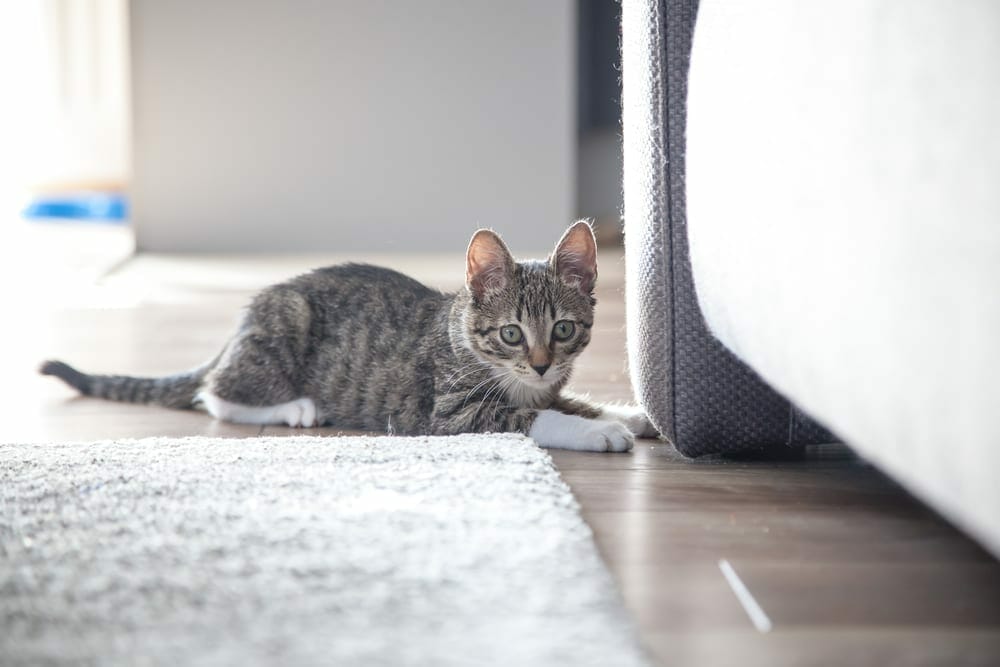Apartment Pets
PIA Australia
November 15, 2018
Pets Insurance Australia takes a look at apartment living with companion animals. With some great tips for all pet owners who are looking to invest or live in an apartment alongside their pet.
For many pet owners living in a rented space with their beloved animal is no easy feat. Looking for a good rental, that ticks all the boxes and also allows companion animals, can be a very difficult task. However, with a little research and understanding you can successfully find the perfect home, that also allows pets.
Jimmy Thomson Editor of the strata living advice website www.flat-chat.com.au agrees that finding a good rental that allows pets can be difficult and warns that if you do not abide by the rules, you can get yourself into a lot of trouble.
“Find a pet-friendly landlord in a pet-friendly building, if you can,” he recommends. “The law may be changing in Victoria but if you want to bring a companion animal into a flat in a building where neither the landlord nor the strata committee want animals, you are asking for trouble.”
He also recommends insuring that the landlord of your possible new dwelling is actually against having pets. The fact is; many landlords may be open to having pets on their property, but the question has never been posed.
“Don’t just accept a rental agent’s word that the landlord doesn’t want pets,” Jimmy says. “If you can, contact the owner and ask if a ‘no-pets’ clause is a deal-breaker.”
Buying an Apartment
If you are considering investing in an apartment it’s important to do your research and ensure the strata are OK with having pets in the building. Sneaking pets in, or defying the rules, because you ‘own’ the apartment could leave you in a very heated situation. It’s best to ensure your chosen residence accepts pets and it’s also a good idea to accept that some people simply do not want pets in the building.
“Find an apartment block that’s already pet friendly,” Jimmy suggests. “Check the by-laws and talk to people who live there – especially pet owners when they take their dogs for a walk. Whatever you do, don’t be determined to make everyone else in a pet-unfriendly building do what you want. That road can only lead to grief and anxiety and, ultimately, you facing the potential of having to sell or find a new home for your fur-baby.”
TIPS for Finding Pet Friendly Accommodation:
1. Find a real-estate agent who is willing to communicate to landlords about possibly allowing pets.
2. Consider offering something additional in the contract. Perhaps a ‘pet bond’ or additional payment for carpet cleaning etc.
3. Prove that your pet is well mannered and trained.
4. Develop a pet resume.
5. Be realistic and find pet friendly buildings.
Dogs
For dogs it is paramount that they are well trained and adequately exercised. Leaving your dog to bark all day long in an apartment setting will quickly be reported to strata and will leave your neighbours with a general bad feeling towards having pets in the building.
Also ensure you abide by all of the rules of the building. Some buildings will not allow pets in the elevators or the foyer area and most will expect your dog to be on lead when walking around the building. Some building will even have a ‘carry at all times’ policy. A tricky way to ensure the size of your chosen breed is not too big.
Proving to your new landlord that your dog is correctly trained can help immensely with securing the apartment.
Cats
Ensure your cat is not suffering from any possible behavioral problems that could pose a problem in a rented situation, such as spraying or inappropriate clawing. Keep litter trays clean and consider only allowing your cat to dwell indoors.
Many times, cats being allowed to wander and toilet around the building will cause stress to neighbours. Cats can happily live indoors in an apartment setting. Ensure you have plenty of ‘scratching’ posts and fun hidey spots. Also consider clipping your cat’s nails short to avoid damage to carpets etc.
“You have two basic rules or sets of conditions,” Jimmy advises. “The first is that the pet shouldn’t damage the property where its living. That’s pretty basic. Other rules or by-laws come into play when the pet interacts with the environment immediately outside the apartment or townhouse.”

8 Comment